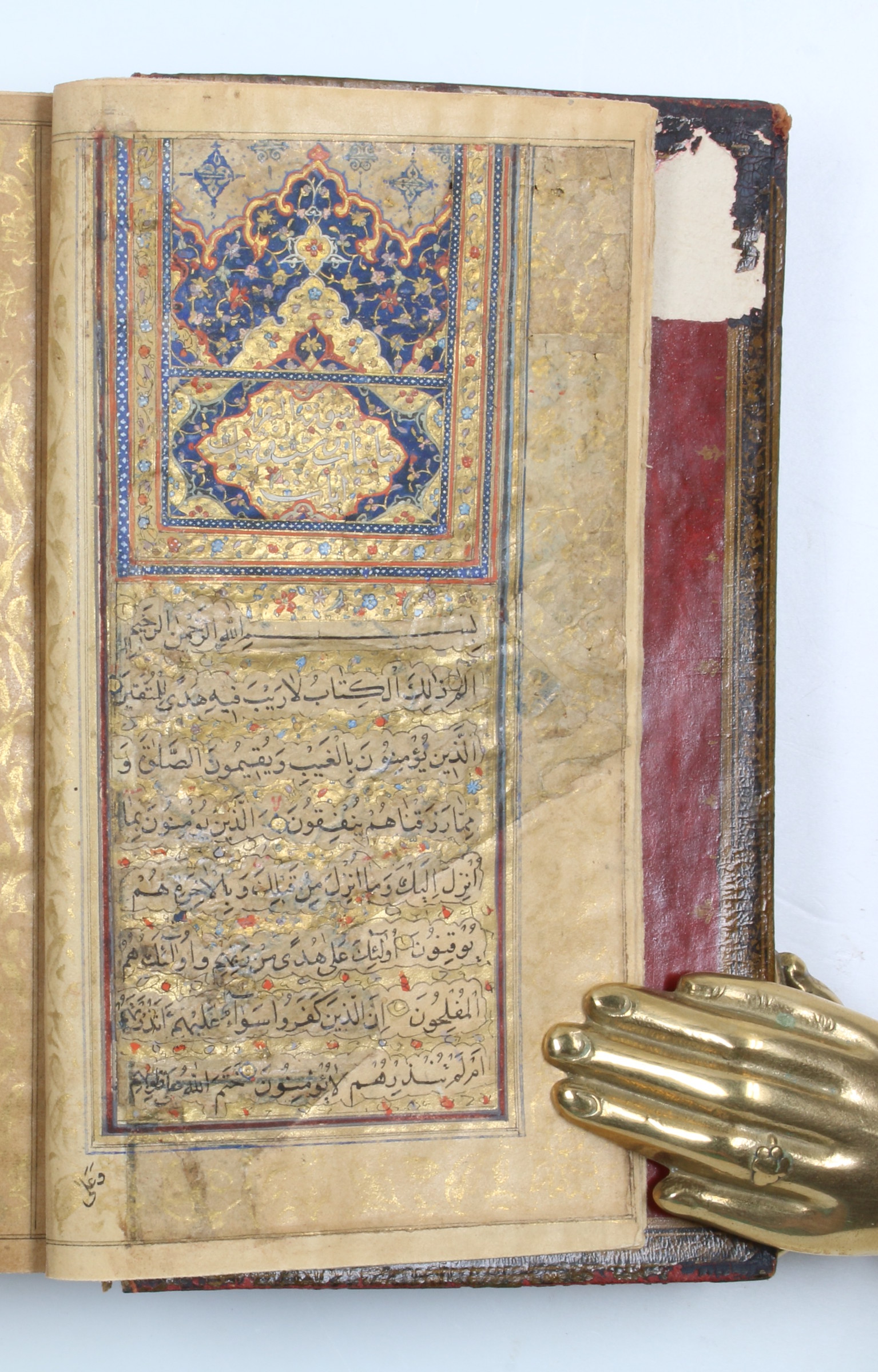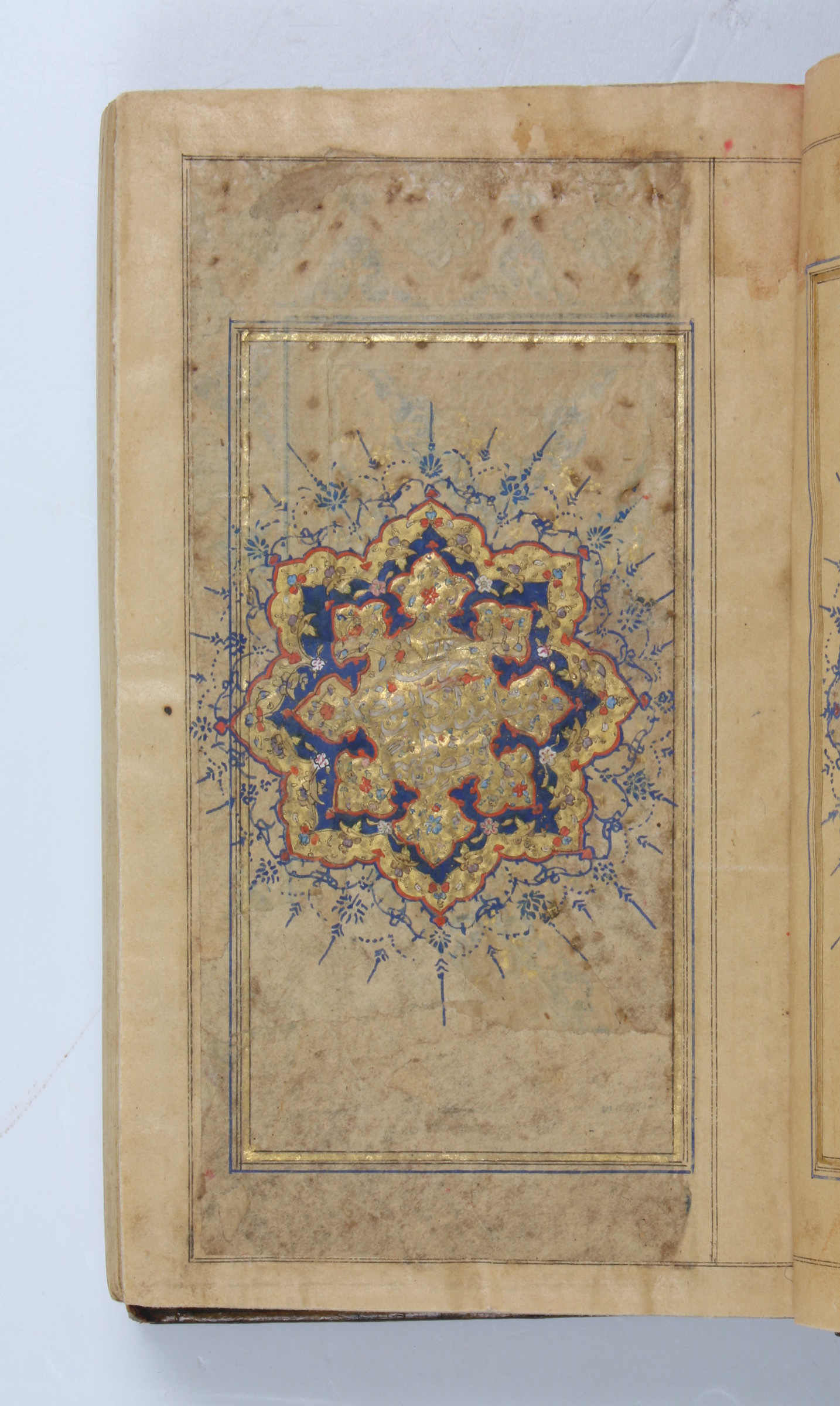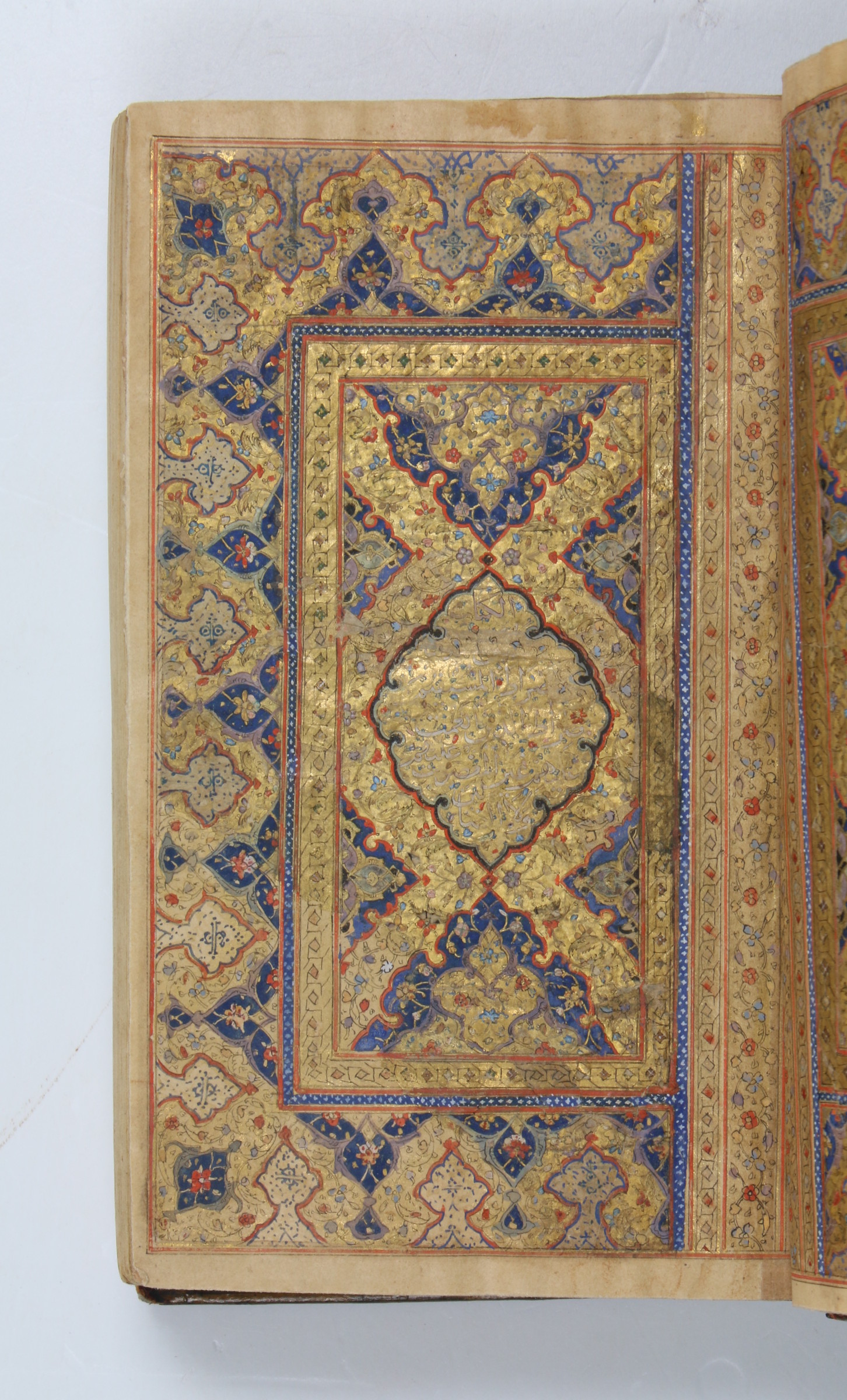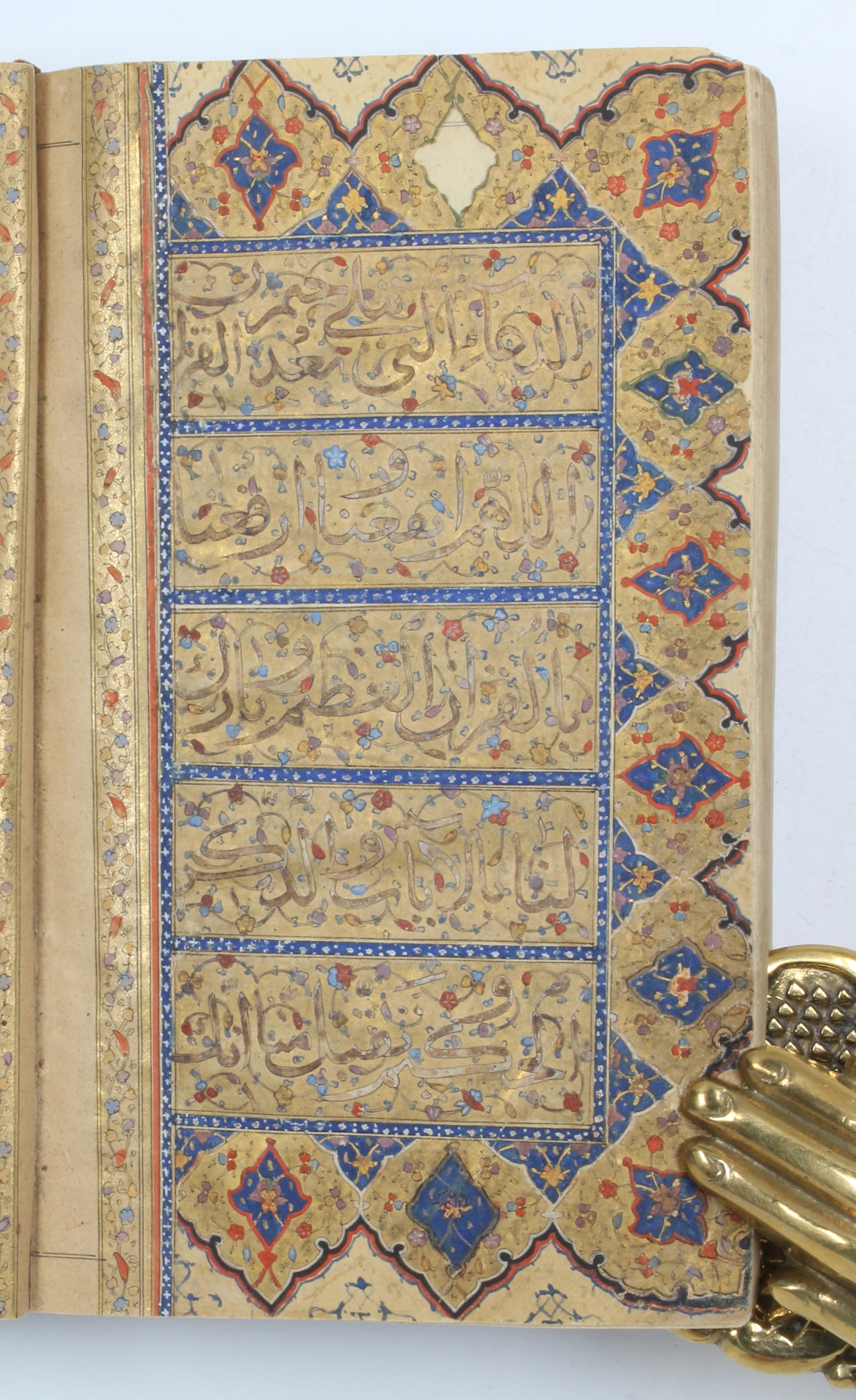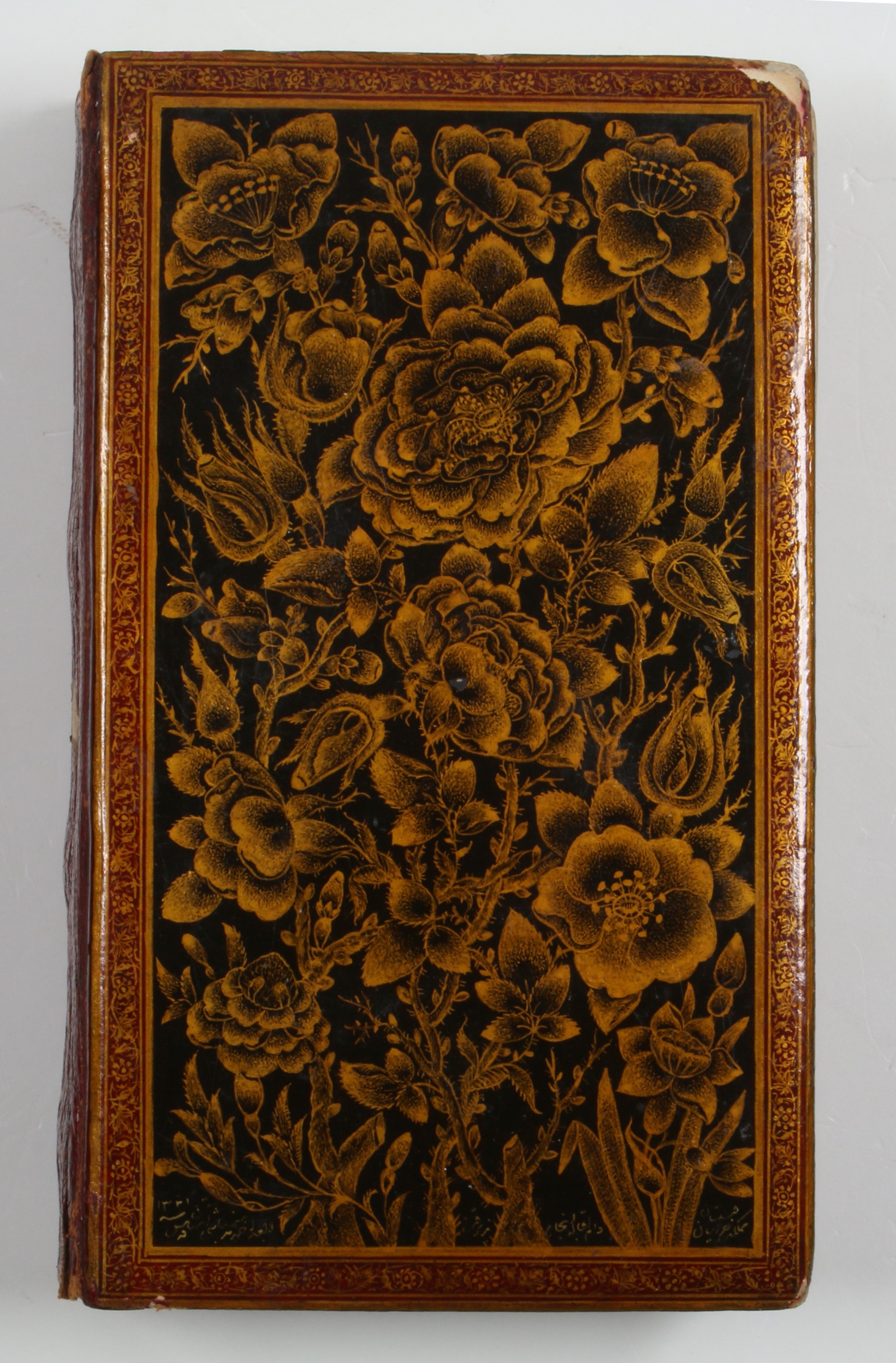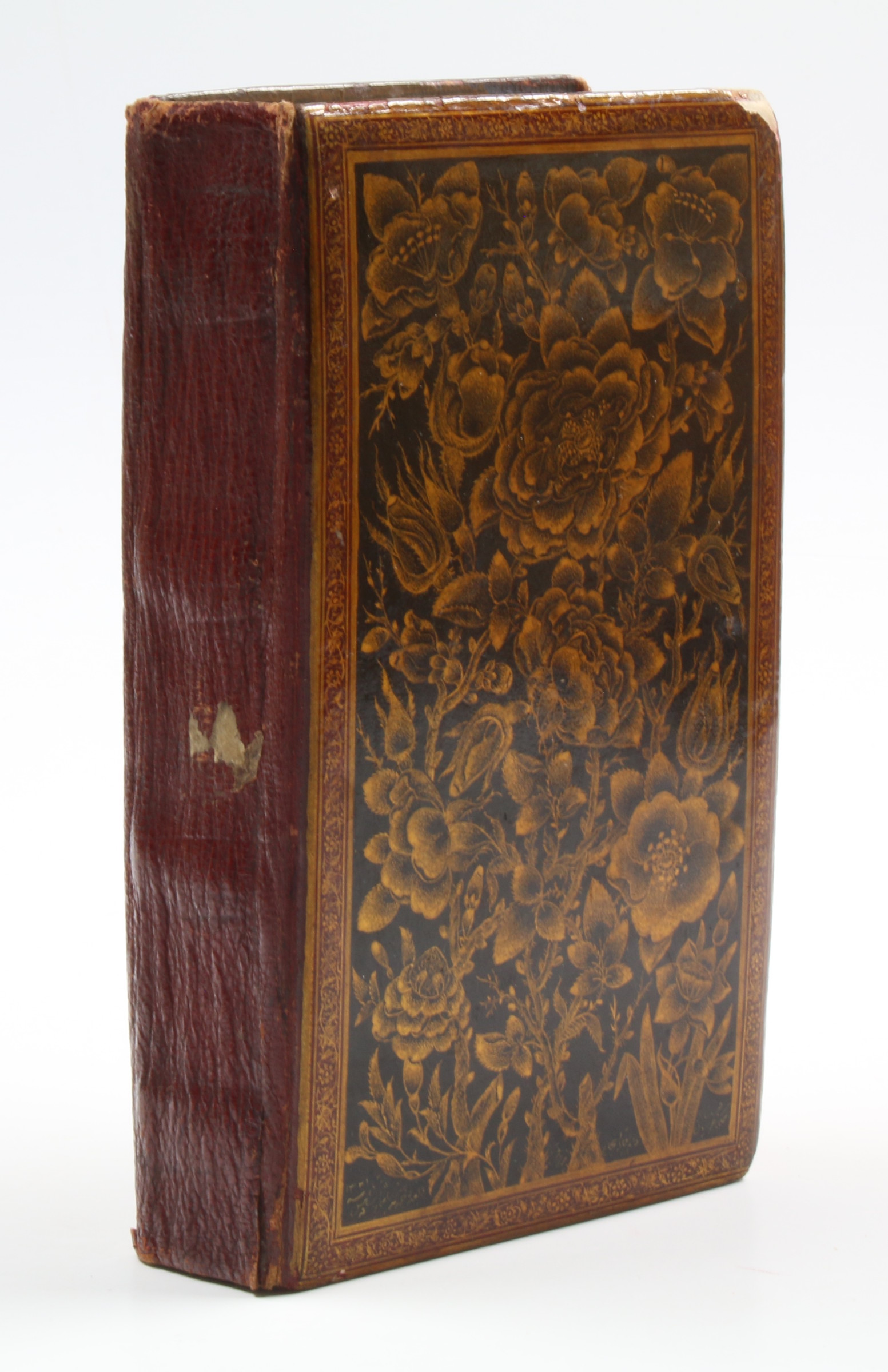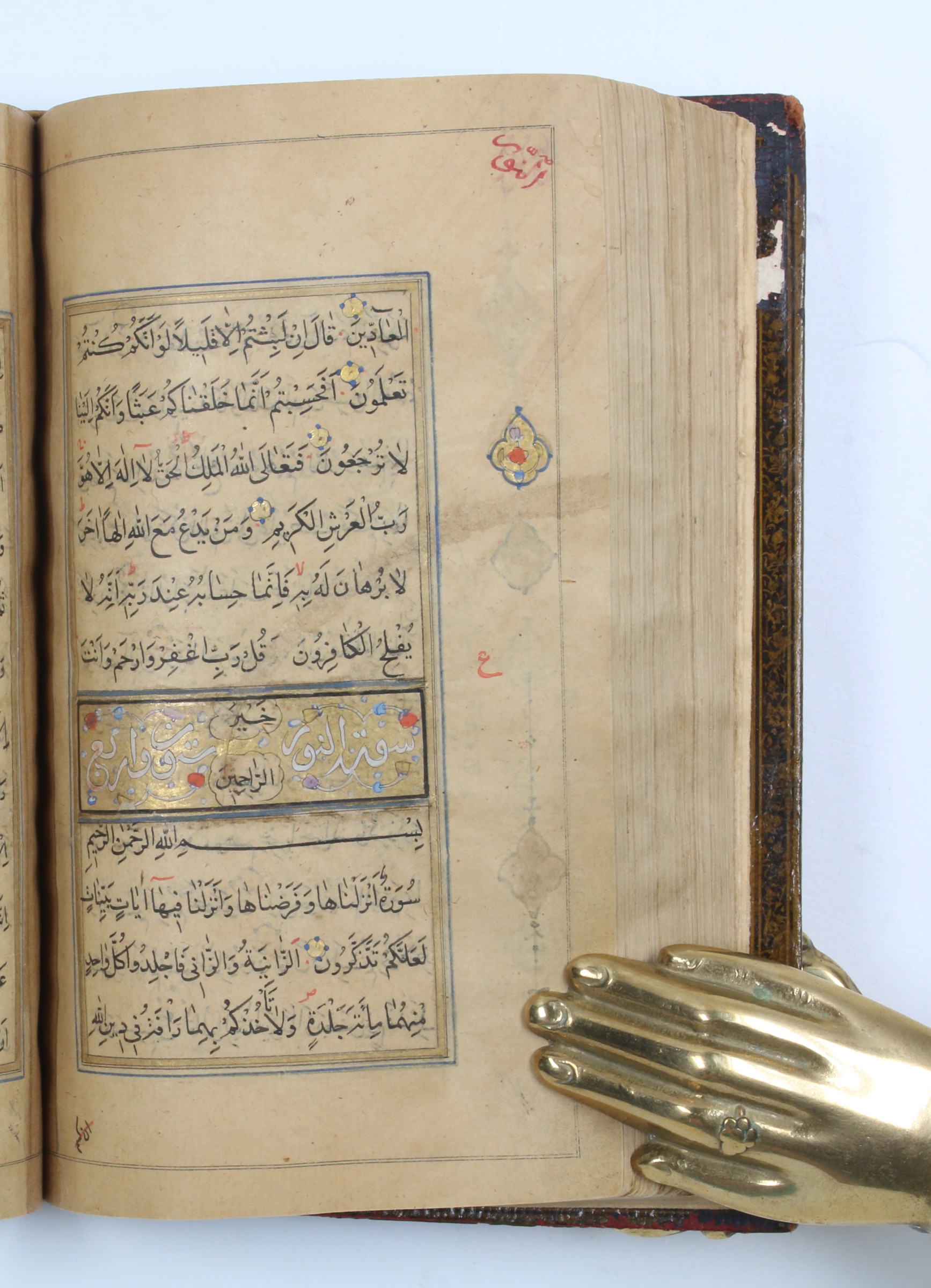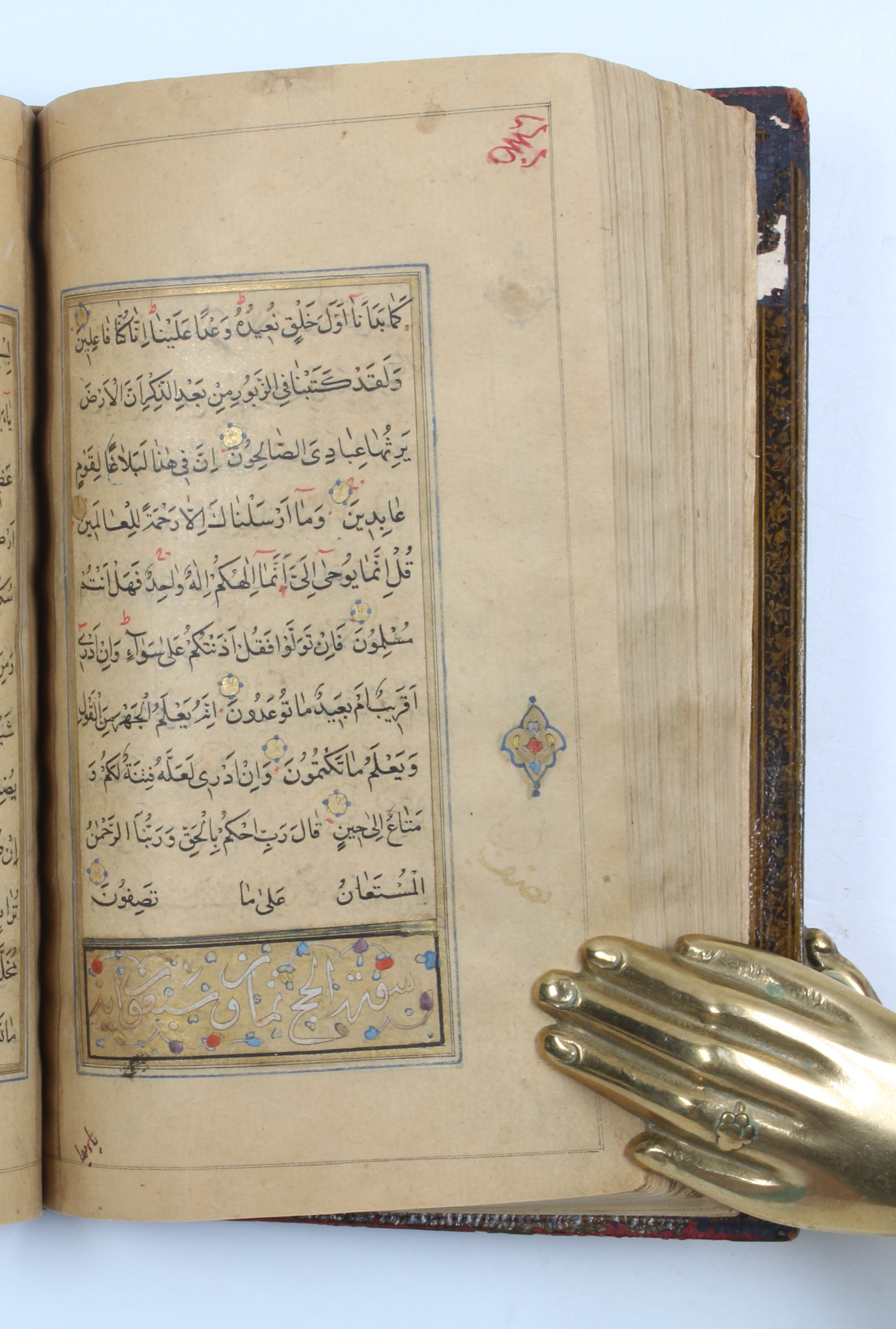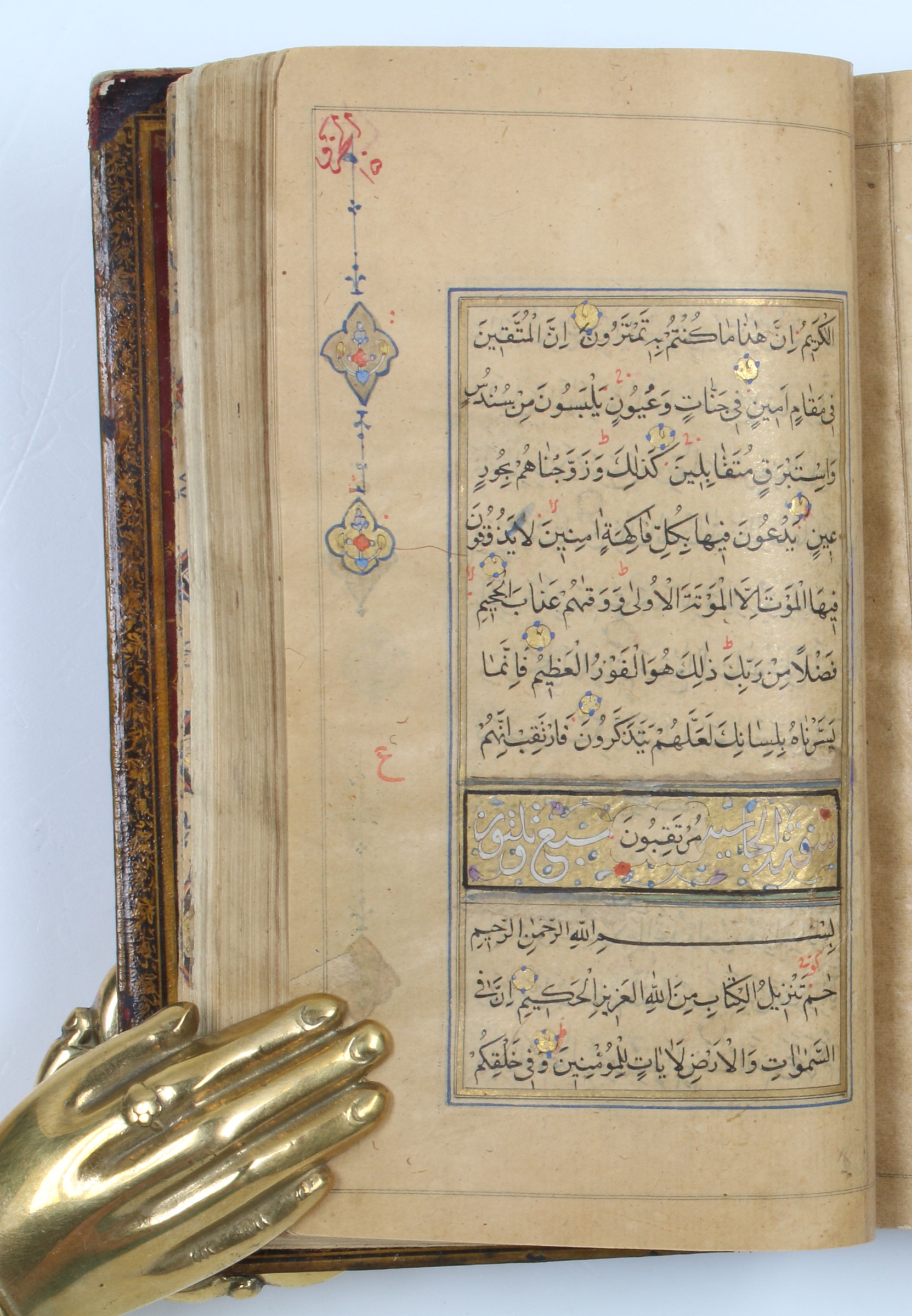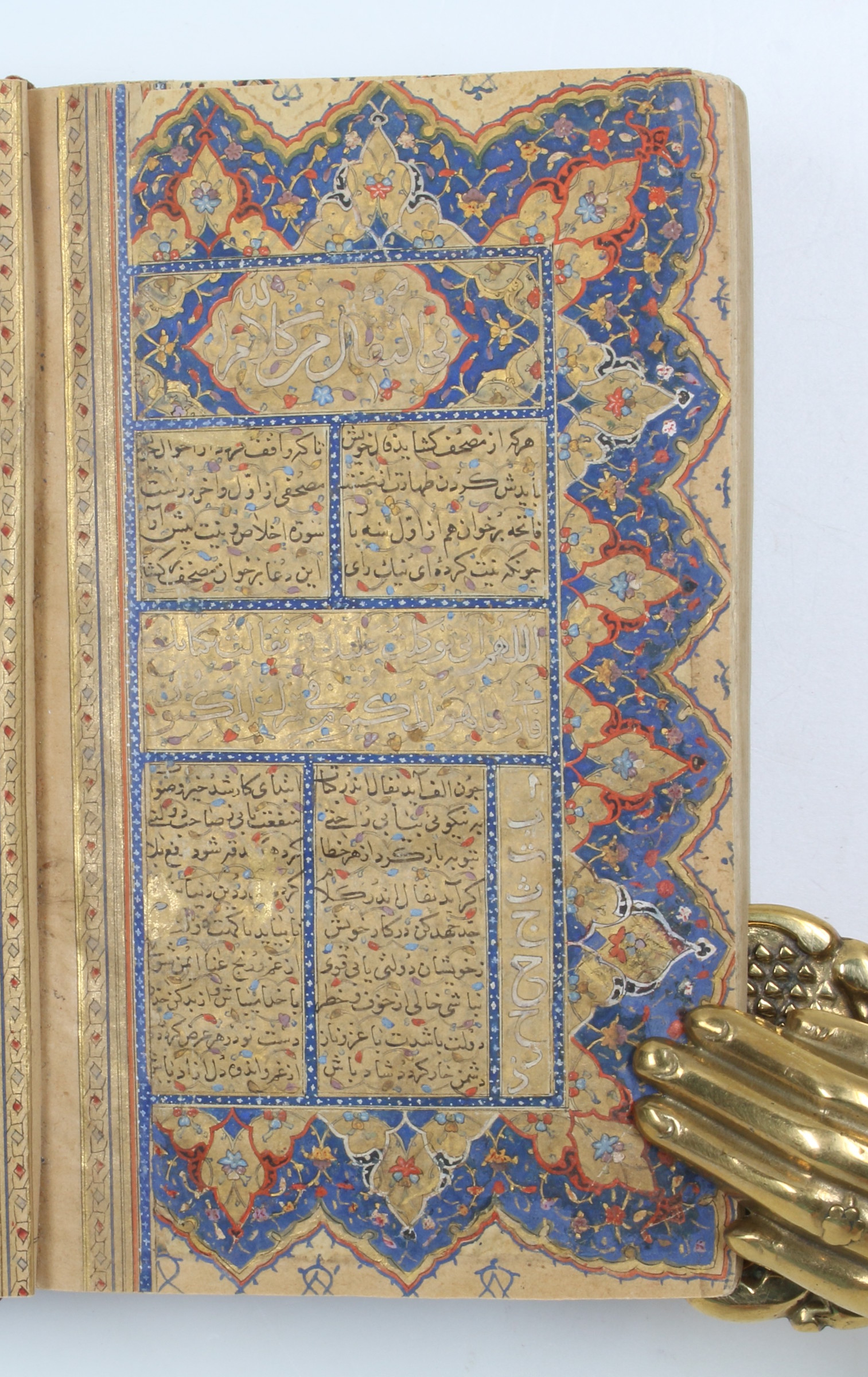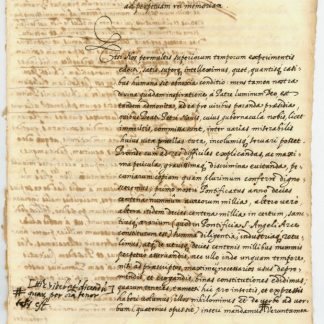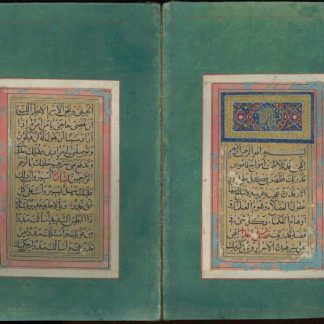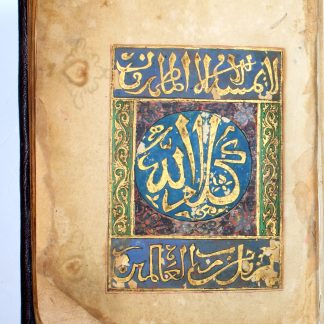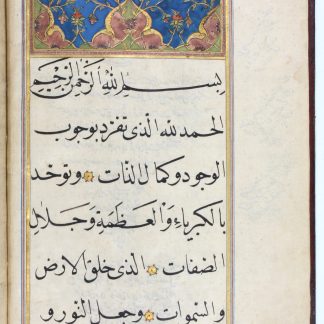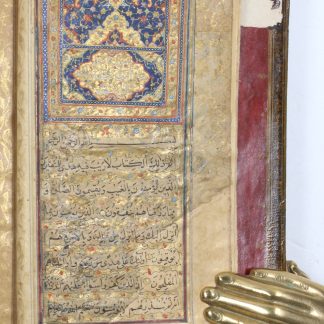Early 17th century illuminated Qur'an from Shiraz
Safavid Qur'an.
12mo (86 x 147 mm). 418 ff. Arabic manuscript on paper. Black nasqkh script ruled in gilt, black, and blue. With 6 leaves fully illuminated in geometric and floral designs, an ornate illuminated 'unwan, and illuminated medallions in the margins. Qur'an followed by prayers in thuluth script on an illuminated double page. Early 20th century floral enameled boards with red morocco spine.
€ 45,000.00
An absolutely exquisite Safavid Qur'an decorated with six full pages of glittering, minutely detailed illumination with twisting floral borders and medallions in azurite or lapis lazuli. Following throughout the text are an elaborate 'unwan and marginal illuminated medallions and illuminated titles in white ruqa', and the juz' and name of the surah in red nasta'liq in the upper corner of each page. Placed at the end of the Qur'an is the Falnamah-i Qur'an ("book of omens"), consisting of a list of short interpretations associated with a letter of the Arabic alphabet: one opens the Qur'an to a page at random and reads the first letter on the page, then refers to the Falnamah to learn the meaning.
At the end of the text, the colophon is signed "Here ends this Qur'an [...] by the hand of [...] Mu'in al-Din who resides at the holy tomb of the Shaykh, Muslih al-Din Sa'di (Divine Mercy be upon him), the 4th day of the month of Safar of the year 1025", placing the scribe in early 17th century Shiraz.
The lacquered binding was commissioned by Mir Muhammad Khan, per an inscription dated 1321 H (1903/04 CE). In 1940 the manuscript appeared in the New York exhibition of Persian Art, and in addition bears the label of the collection of Armenian-American archeologist Hagop Kevorkian (1872-1962).
Upper top corner lightly rubbed; a few traces of very subtle paper repairs. Remarkably well preserved.

